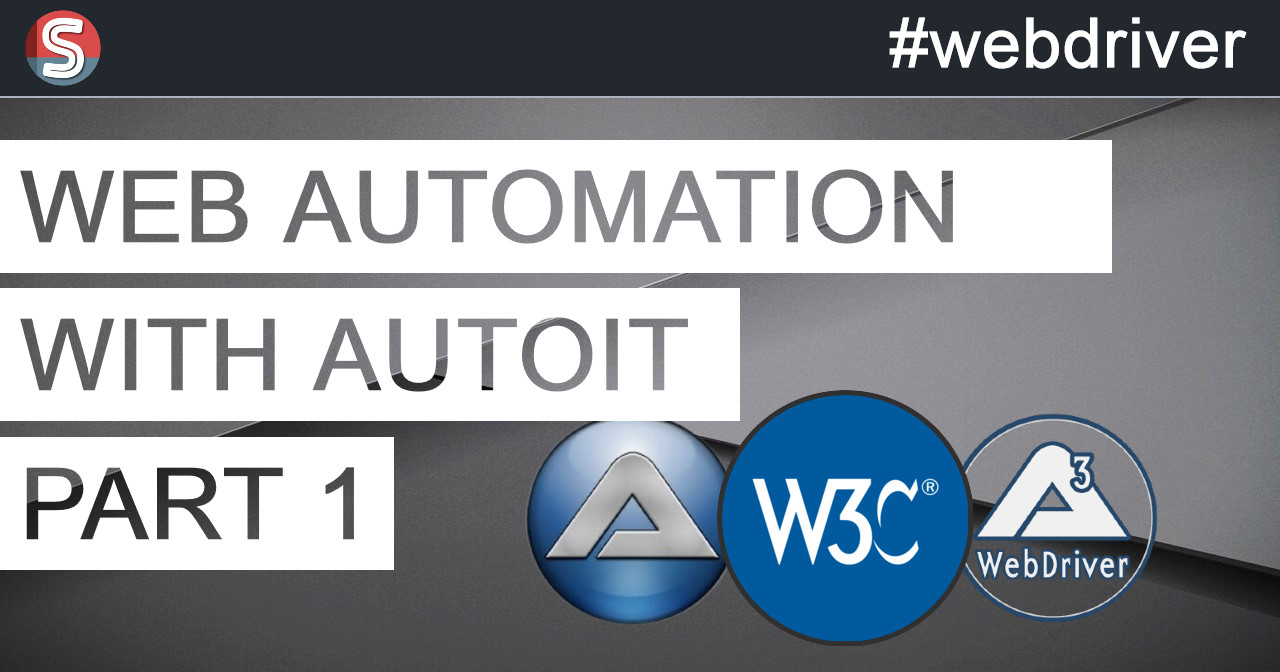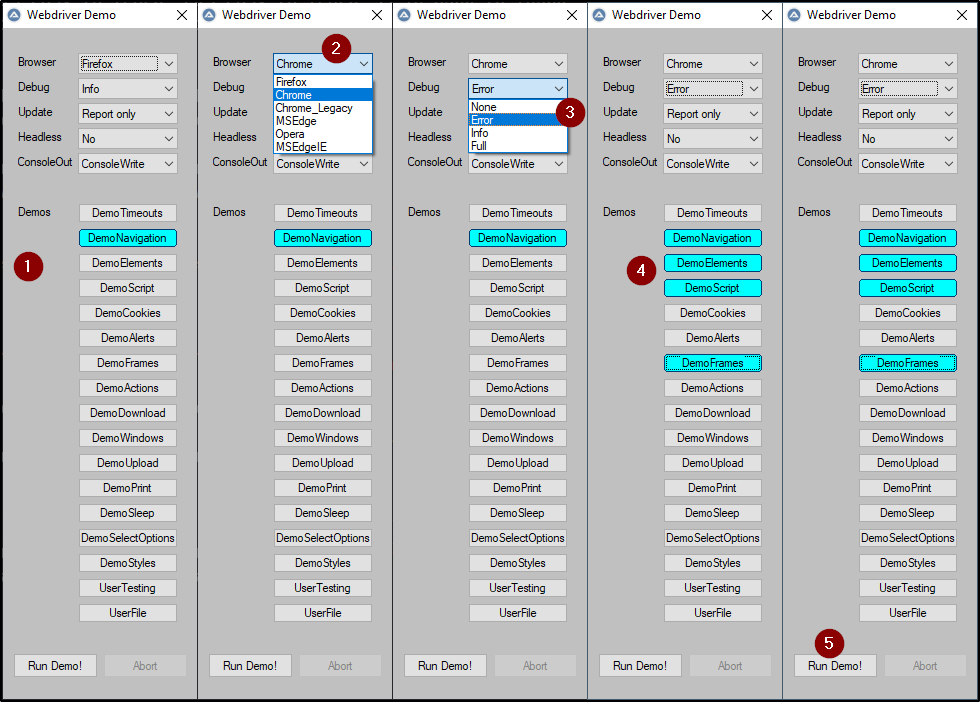Web Automation with AutoIt: 🔮 Did you know it is possible?
 Sven Seyfert
Sven Seyfert
Preface
In today's digital world, automating websites is essential. Whether for testing, data extraction, or performing repetitive tasks, automation can save time and resources. One often-overlooked language for this purpose is AutoIt. In this blog post, I'll start to explore how to automate websites using AutoIt along with the au3WebDriver framework, which is built on the WebDriver specification.
What is AutoIt?
AutoIt is a powerful scripting language specifically designed for automating Windows applications. With a clear and easy-to-understand syntax, it allows users to automate tasks that would otherwise need to be performed manually. AutoIt offers a wide range of functions for interacting with Windows (OS), UIs as well as executing system commands.
Common use cases
The following use cases are well-known in the AutoIt community, and the language is particularly well-suited for them.
Business Process Automation: Boost efficiency by automating repetitive tasks.
Testing and Quality Assurance: Ideal for testing software and UI verification.
System Administration: Streamline installations and configurations.
Overlooked use case: Web Automation
For many, AutoIt is not the first choice when it comes to process (web) automation or web scraping. But what is the reason for this? As an active member of the communities in the English and German forums, I have come to realize that the project au3WebDriver is hardly known, and questions about getting started with this framework keep arising.
Once explained and with a few use cases well presented, users are often excited to see how they can also be active on the web with their favorite language. They can engage in web scraping or simply automate process steps in the browser.
Introduction to au3WebDriver
The au3WebDriver project is a framework, a UDF (library), that allows AutoIt to utilize the WebDriver protocol. WebDriver is a powerful application that enables developers and testers to create automated tests or execute tasks for web applications. The framework allows to interact with any browser that supports the W3C WebDriver specifications. Various web browsers, including Chrome, Firefox, MSEdge and chromium based ones are supported.
Advantages of automation with AutoIt and au3WebDriver
Simplicity: AutoIt is easy to learn, enabling you to accomplish complex automation tasks with relatively short and concise code.
Versatility: You can automate both desktop applications and web applications with AutoIt, making it an ideal tool for multi-purpose automation.
Deployment: The ability to compile AutoIt scripts and the au3WebDriver framework into one executable file makes the deployment and execution super easy.
Configuration: AutoIt self does not need any specific configuration and au3WebDriver needs some (few) settings.
Community and support: The AutoIt community is active and offers numerous resources, example scripts, and assistance to help you get started.
Similarities and comparison

| Feature | au3WebDriver | Selenium | WebdriverIO |
| Supported lanugage(s) | AutoIt | JavaScript, Python, C# and more | JavaScript |
| Primary usage | Web Automation | Web (and Mobile) Automation | Web and Mobile Automation |
| License | MIT license (Open Source) | Apache License 2.0 (Open Source) | MIT license (Open Source) |
| Based on | WebDriver protocol | WebDriver protocol | WebDriver protocol |
| Install and configuration effort | low to medium | medium to high | low to medium |
| API | quite intuitive | less intuitive | intuitive |
| Documentation | distributed; larger central documentation is missing | well-documented | well-documented |
| Learning curve | moderate | steep | beginner-friendly to moderate |
| Ecosystem | small; limited | large (mature framework) | medium to large (mature framework) |
| Community support | limited but very well-founded | active community | active community |
| Cross browser ability | yes | yes | yes |
| Deployment | very easy; building one executable file is possible | complex (dependencies such node.js etc.) | can be complicated (Selenium server etc.) |
| Integrated reporter | no (not yet) | yes | yes |
Getting started by simple examples
Fortunately, the project documentation for au3WebDriver provides a good "Usage" section, in addition to notes on preconditions (downloading few dependencies), which demonstrates the typical interactions with websites and the WebDriver (for the browser).
Quick start
Basically do these steps to validate your installation:
download the latest release version of au3WebDriver (or fork the repository)
follow the short instructions of the preconditions and "Installation" sections
run file wd_demo.au3 ①
choose your browser to automate ②
set the debug option (log level) to "Error" ③
choose the demos (examples) which do you like to get executed ④
and press the "Run Demo!" button ⑤

This will perform the chosen website tasks like navigation, deal with iframes and many more for your desired browser.
Deep dive
To adapt these browser interactions for your own use cases, it takes considerably more than just another blog post; however, a look at the file wd_demo.au3 can already be quite helpful.
A deep dive into the framework is on the agenda (part 2) 😎 .
Conclusion
Automating websites with AutoIt and au3WebDriver combines the advantages of a user-friendly scripting language with the power of the WebDriver protocol. Whether you're diving into the world of AutoIt due to limitations in other automation tools or out of pure curiosity, the possibilities are nearly limitless.
Now it’s your turn! Give it a try and let your creativity flow as you create your own automation scripts. I look forward to your comments with any questions or insights!
What's coming next
Stay tuned for more detailed and practical WebDriver insights with the usage of AutoIt 👀 . Next time I will show a more advanced variant of using au3WebDriver for an even more comfortable way of using. #boilerplate #wrapper
Best regards 👋
Sven (SOLVE-SMART)
🔗 References
| Reference | Link |
| AutoIt | https://www.autoitscript.com |
| W3C WebDriver | https://www.w3.org/TR/webdriver/ |
| au3WebDriver | https://github.com/Danp2/au3WebDriver |
| WebDriver Wiki | https://www.autoitscript.com/wiki/WebDriver |
| My boilerplate template | https://github.com/Sven-Seyfert/autoit-webdriver-boilerplate |
Subscribe to my newsletter
Read articles from Sven Seyfert directly inside your inbox. Subscribe to the newsletter, and don't miss out.
Written by

Sven Seyfert
Sven Seyfert
Hi there, I am Sven aka SOLVE-SMART, a Software Development Engineer in Test (SDET). Also I am a husband, father, friend, son, IT geek and very involved.